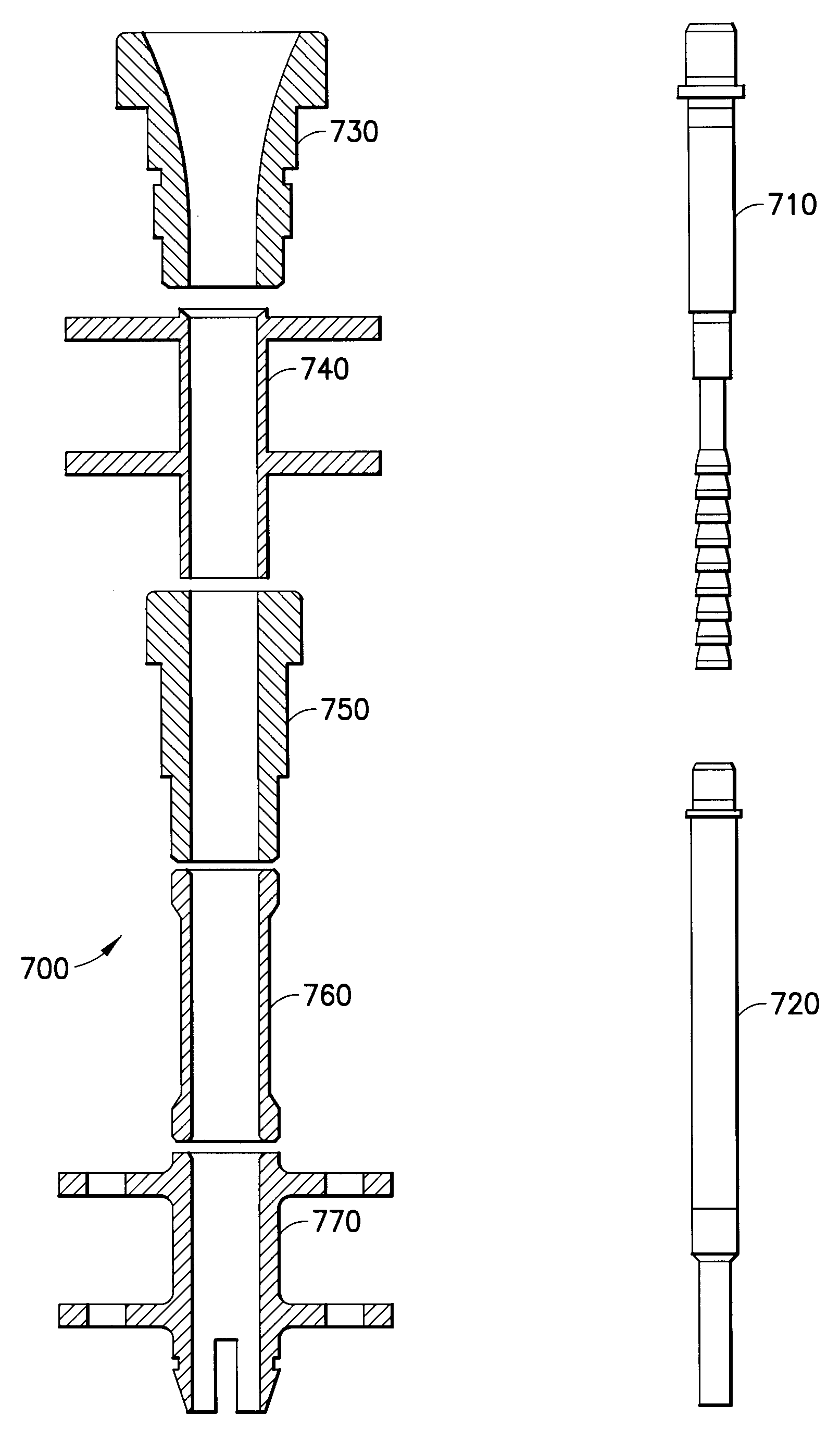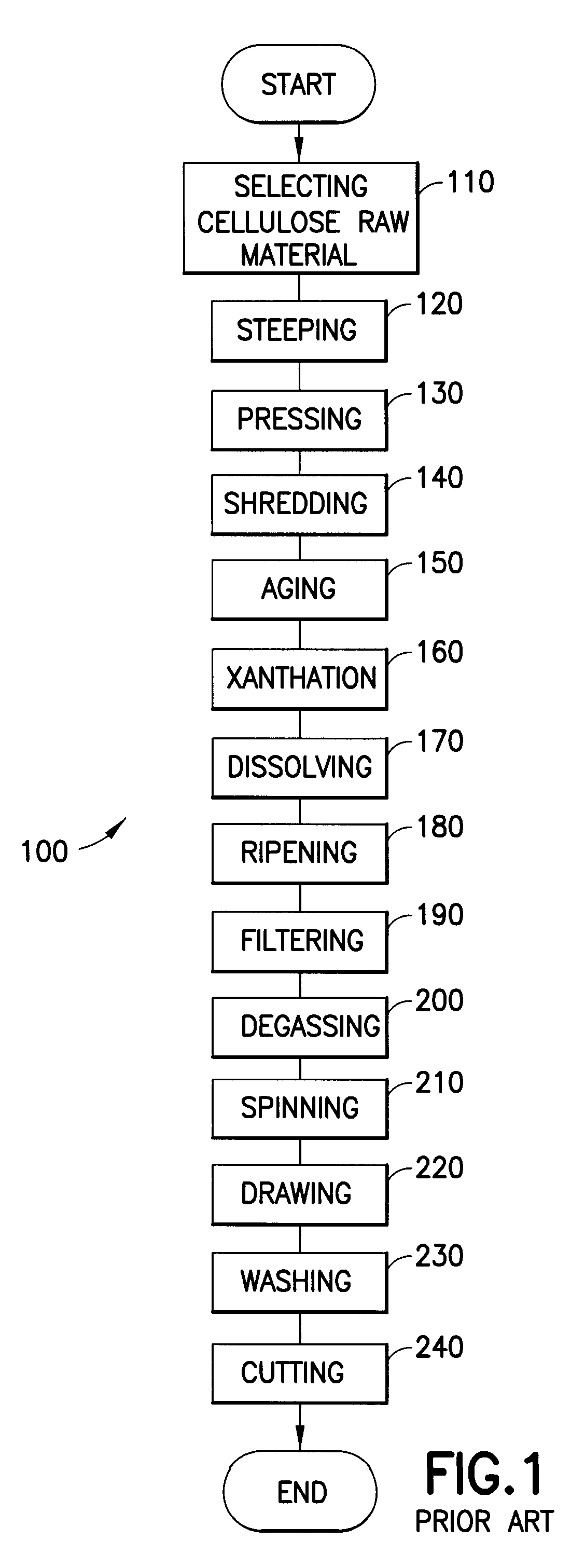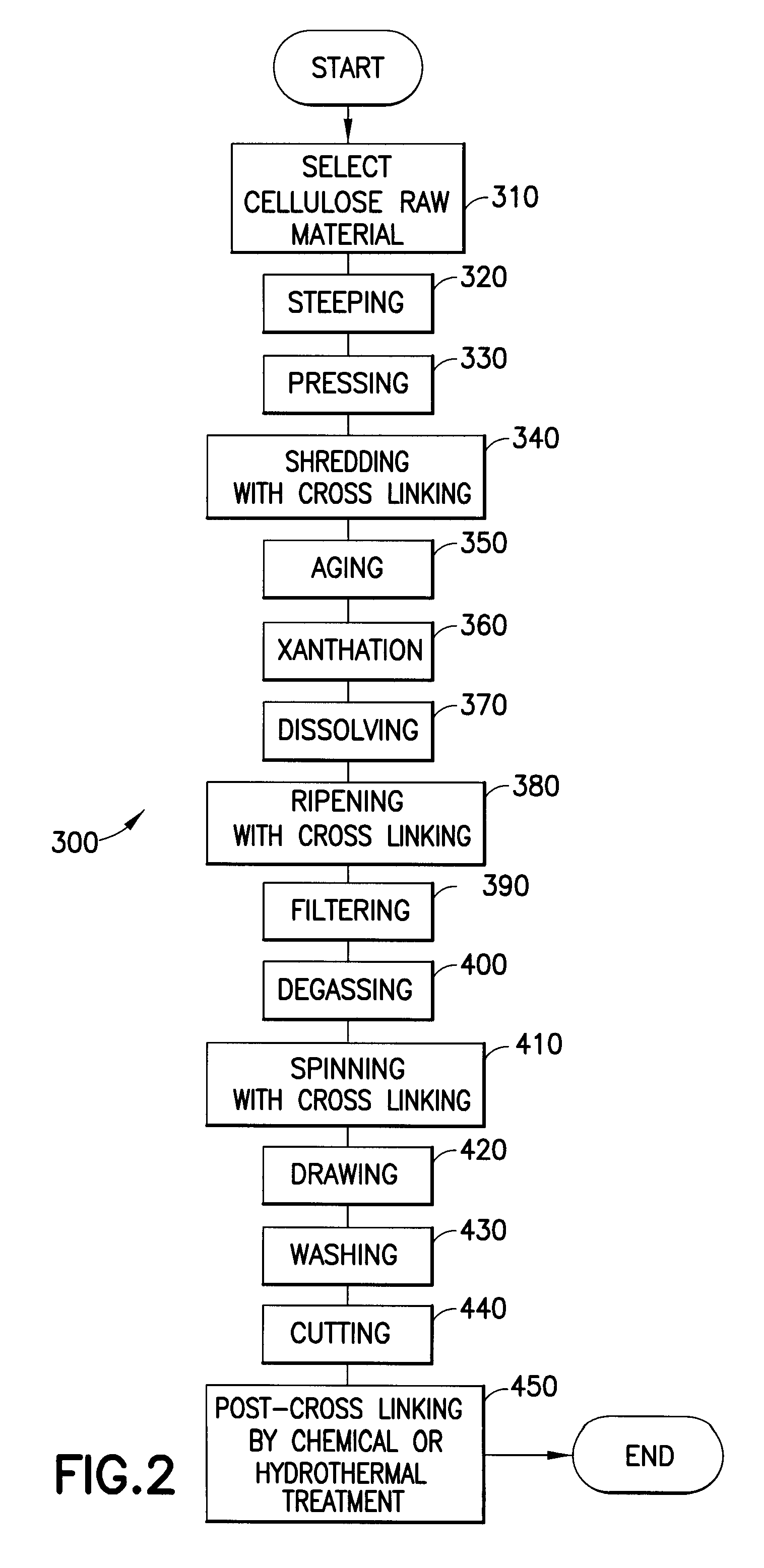Tampon including crosslinked cellulose fibers and improved synthesis processes for producing same
a technology of cellulose fibers and tampons, which is applied in the field of absorbent articles, can solve the problems of inability of wet cellulosic fibers in absorbent products to further acquire wet cellulosic fibers, and the use of rayon for tampons. it can achieve the effect of improving absorbency
- Summary
- Abstract
- Description
- Claims
- Application Information
AI Technical Summary
Benefits of technology
Problems solved by technology
Method used
Image
Examples
Embodiment Construction
[0023]In accordance with the present invention, a tampon pledget is formed from crosslinked cellulose fibers such as, for example, rayon. In one aspect of the invention, an overall molecular weight of the crosslinked rayon is adjusted, as is the percent crosslinking and the molecular weight between crosslinks in order to increase the absorbency of the crosslinked rayon and to achieve a balance in dry modulus and wet modulus that leads to better performing tampons.
[0024]Tampon performance considerations are addressed by tampon pledgets formed in accordance with the present invention to provide an ability to: (a) absorb viscoelastic fluids like menses more than conventional tampons; (b) absorb menses faster than conventional tampons; (c) conform to the shape and contours of the vagina better to enhance wearing comfort; (d) prevent early bypass failure by expanding rapidly during use to occlude all routes by which fluids could escape the vaginal cavity; (e) exhibit high gram per gram s...
PUM
| Property | Measurement | Unit |
|---|---|---|
| temperature | aaaaa | aaaaa |
| temperature | aaaaa | aaaaa |
| degree of crystallinity | aaaaa | aaaaa |
Abstract
Description
Claims
Application Information
 Login to View More
Login to View More - R&D
- Intellectual Property
- Life Sciences
- Materials
- Tech Scout
- Unparalleled Data Quality
- Higher Quality Content
- 60% Fewer Hallucinations
Browse by: Latest US Patents, China's latest patents, Technical Efficacy Thesaurus, Application Domain, Technology Topic, Popular Technical Reports.
© 2025 PatSnap. All rights reserved.Legal|Privacy policy|Modern Slavery Act Transparency Statement|Sitemap|About US| Contact US: help@patsnap.com



